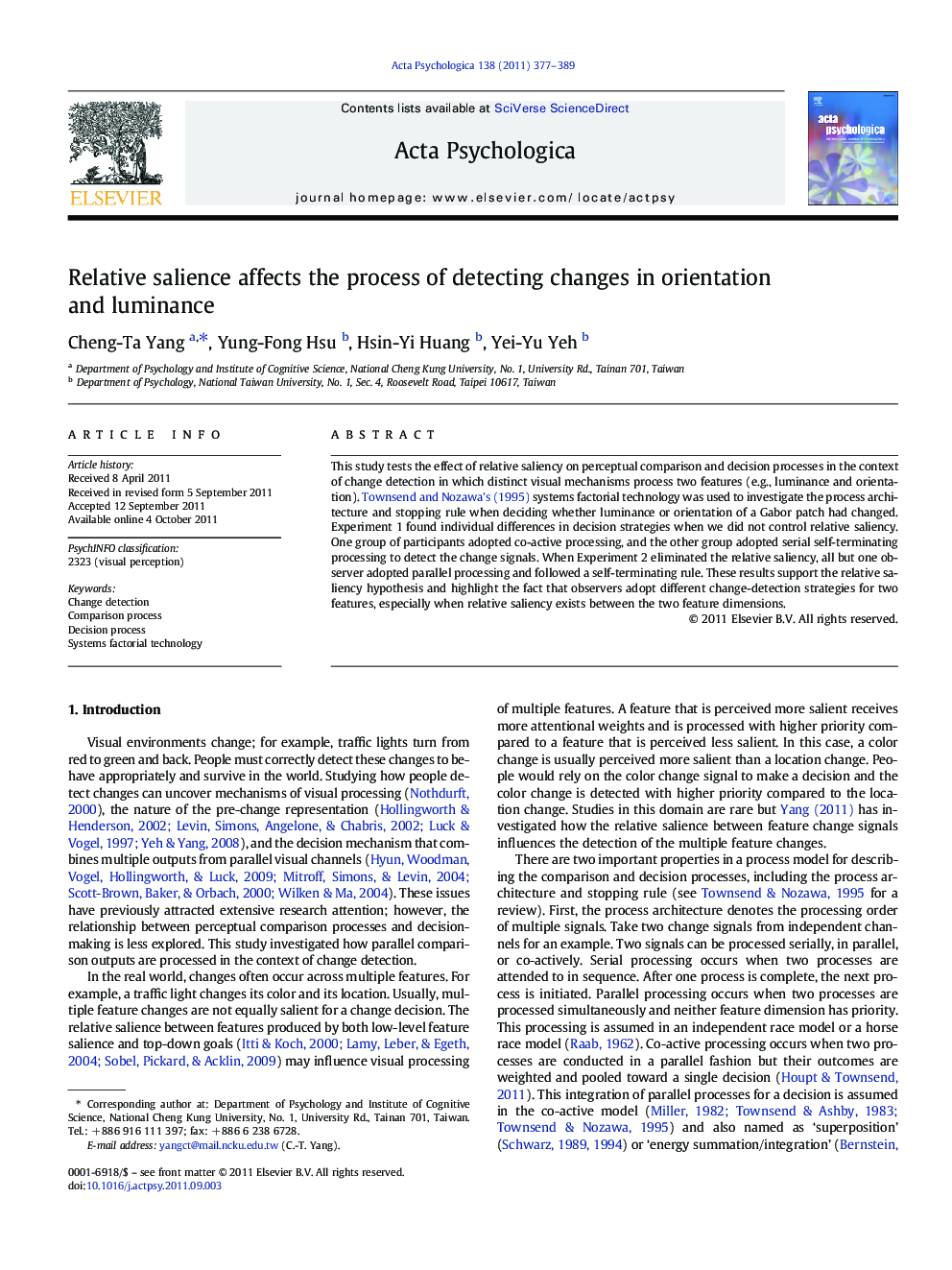| Article ID | Journal | Published Year | Pages | File Type |
|---|---|---|---|---|
| 920045 | Acta Psychologica | 2011 | 13 Pages |
This study tests the effect of relative saliency on perceptual comparison and decision processes in the context of change detection in which distinct visual mechanisms process two features (e.g., luminance and orientation). Townsend and Nozawa's (1995) systems factorial technology was used to investigate the process architecture and stopping rule when deciding whether luminance or orientation of a Gabor patch had changed. Experiment 1 found individual differences in decision strategies when we did not control relative saliency. One group of participants adopted co-active processing, and the other group adopted serial self-terminating processing to detect the change signals. When Experiment 2 eliminated the relative saliency, all but one observer adopted parallel processing and followed a self-terminating rule. These results support the relative saliency hypothesis and highlight the fact that observers adopt different change-detection strategies for two features, especially when relative saliency exists between the two feature dimensions.
► We test the effect of relative saliency on the adoption of change-detection strategy ► Systems factorial technology was used to investigate the decision process ► Individual differences in decision strategies emerged when relative saliency existed ► Most observers adopted parallel processing when relative saliency was eliminated ► These results support the relative saliency hypothesis
